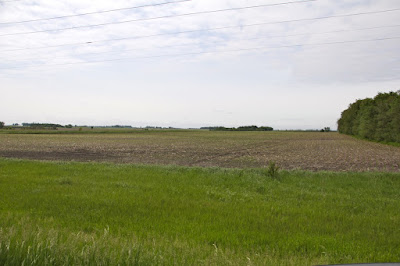Many, many years ago I encountered the quote: “Demography is destiny,” probably in a college sociology course. This morning, and in other recent readings, I’ve seen the truth of the observation in question.
From today’s Daily Yonder story, Commentary: Wyoming Puts Moms – and Rural Communities – at Risk with Gaps in Maternal Care. But Wyoming isn’t the only state to face inadequate maternal care: Less than half of the rural hospitals in America even offer labor and delivery services. Writing about one particular mom, the author notes:
Today, her county of Fremont, a New-Hampshire-sized area home to 40,000 people, has gone from two birthing hospitals and many obstetricians, to one delivery facility and a single pregnancy doctor for the general population. The trend prompts women in increasing numbers to travel out of the county to give birth—an expensive and logistically challenging option. “I just think it’s insane,” Wachter said. “It puts women at risk.”
The statistics bear out her observation. Women who live farther from delivery hospitals are more likely to experience adverse medical outcomes, such as requiring neonatal intensive care.
What troubles me deeply, is the lack of mention of another aspect of maternal health care, as noted in Obstetric Volume and Severe Maternal Morbidity Among Low-Risk and Higher-Risk Patients Giving Birth at Rural and Urban US Hospitals.
Conclusions and Relevance In this cross-sectional study of births in US rural and urban counties, risk of SMM [severe maternal morbidity] was elevated for low-risk and higher-risk obstetric patients who gave birth in lower-volume hospitals in rural counties, compared with similar patients who gave birth at rural hospitals with greater than 460 annual births. These findings imply a need for tailored quality improvement strategies for lower volume hospitals in rural communities.
 |
| rural farm field, few people here
Photo by J. Harrington
|
Urban and rural fertility rates appear similar enough that one distinguishing major variable is likely to be total population and density differences between urban and rural areas. For example, Fremont County, Wyoming’s popullation of 40,000 compares to New Hampshire’s 2024 population of about 1.5 million. The former has shown a significant decline in births by mother’s county of residence between 2008 and 2022. This, of course doesn’t address the chicken and egg question of which came first, loss of birthing centers or decline in number of births. It does suggest that Earl Butz took an extremely short term, short sighted, view years ago when he suggested farmers and ranchers should “Get big or get out.” Perhaps rural areas would have been better served over the long term if he had said “Use it or lose it.”
Ultrasound
Novel unbegun,half-loaf rising,lighthouse northwardand anchor south.Lemon to grapefruit,you sleep-step sidewise,turnover, pop-up,tongue in the mouth.
********************************************
Thanks for visiting. Come again when you can.
Please be kind to each other while you can.
No comments:
Post a Comment